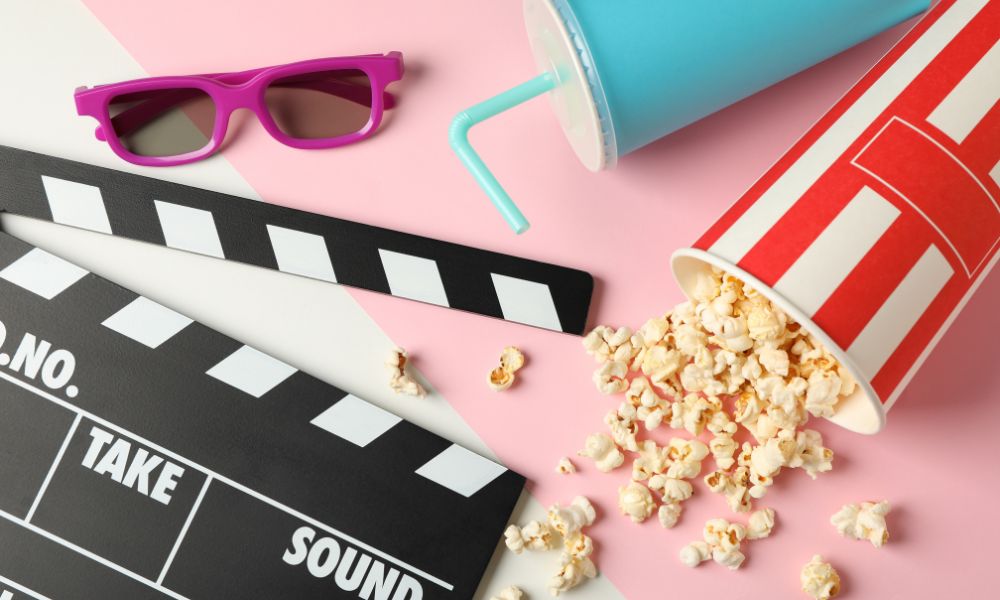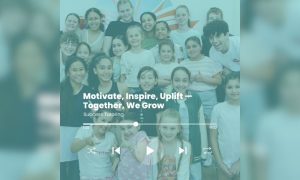English Film Techniques
In this blog post, we will delve into the world of film and explore the various techniques used by filmmakers to enhance storytelling and create a powerful visual experience. We will cover a wide range of film techniques, including camera angles, editing, sound, lighting, and more. Through expert insights and examples, we will help you understand the purpose and impact of each technique on the viewer’s perception and engagement.
What are film techniques?
Film techniques refer to the tools and methods used by filmmakers to convey meaning, evoke emotions, and enhance the visual storytelling in a film. These techniques are employed in various aspects of filmmaking, including camera work, editing, sound design, lighting, and more. By using different techniques, filmmakers can manipulate the audience’s perception, create specific moods, and convey complex ideas effectively.
Let’s dive in and uncover the secrets behind captivating visuals, compelling narratives, and the power of cinematic storytelling.
Film techniques
Camera Angles
The positioning of the camera relative to the subject or scene, such as low angle, high angle, or bird’s-eye view. Camera angles can convey power, vulnerability, or a sense of dominance.
Here are some common camera angles and their descriptions:
- Eye-level angle: Camera placed at the same level as the characters or subjects. This provides a neutral and balanced perspective, allowing the audience to engage with the scene on an equal footing.
- Low angle: The camera is positioned below the eye level of the subjects, looking upward. Low angles can make characters or objects appear more powerful, dominant, or threatening. They create a sense of awe or intimidation and are often used to depict heroism or villainy.
- High angle: The camera is positioned above the subjects, looking downward. High angles can make characters or objects appear smaller, weaker, or vulnerable. They create a sense of inferiority or submissiveness and are often used to convey power dynamics or helplessness.
- Bird’s-eye view: The camera is placed directly overhead, providing a view from a very high angle. Bird’s-eye view shots are useful for showing the overall layout or geography of a scene. They can create a sense of detachment or omniscience, as if the viewer is looking down upon the action from a higher perspective.
- Dutch angle (or oblique angle): The camera is tilted to one side, resulting in a tilted frame. Dutch angles are used to create a feeling of disorientation, tension, or instability. They can be employed to convey a character’s psychological state or to create an unsettling atmosphere.
- Point of View (POV) angle: The camera is positioned to simulate the perspective of a character, showing the scene from their point of view. POV angles are used to immerse the audience in the character’s experience and create a sense of empathy or identification.
Colour
Colour film technique refers to the deliberate use and manipulation of colour within a film to enhance storytelling and create a specific visual atmosphere. Colour film technique allows for the effective communication of themes, characterisation, and atmosphere, adding depth and layers to the storytelling process.
Costume

Costume film technique refers to the deliberate selection and design of costumes worn by characters to enhance the narrative, establish time periods or cultural contexts, and convey specific themes or character traits. Costume is an essential visual element in filmmaking that contributes to character development, storytelling, and the overall aesthetic of a film.
Costume film technique requires careful consideration of character traits, historical accuracy, thematic relevance, and visual aesthetics. Through the thoughtful selection and design of costumes, filmmakers can effectively immerse the audience in the world of the film, deepen the understanding of characters, and enrich the storytelling experience.
Cut
The cut is a fundamental film technique used in editing to transition from one shot to another. It involves the abrupt change from one image to the next, creating a seamless and continuous flow of visual information. Here are some common types of cuts:
- Straight Cut: Where one shot is directly replaced by the next shot without any visual effect or transition. It creates a quick and smooth transition between shots, maintaining the visual continuity and advancing the narrative.
- Jump Cut: A cut that creates a noticeable jump in time or space within a scene. It involves removing a portion of a shot and joining the remaining sections together, resulting in a disorienting or jarring effect. Jump cuts are often used to convey the passage of time, show a character’s thought process, or create a sense of unease or tension.
- Cross-Cut (Parallel Editing): Cross-cutting is a technique that alternates between two or more scenes happening simultaneously in different locations. It creates a sense of parallel action or builds suspense by juxtaposing different events or perspectives. Cross-cutting is commonly used in action sequences, suspenseful moments, or to illustrate cause-and-effect relationships.
- Match Cut: A match cut is a type of cut that establishes a visual or thematic connection between two shots. It involves aligning similar visual elements, such as shapes, colours, or movement, to create a smooth and seamless transition. Match cuts can be used to convey continuity, contrast, or to emphasise a specific idea or motif.
- Montage: A montage is a sequence of rapidly edited shots that condenses time or presents a series of related events. It is often used to compress a large amount of information or to show the passage of time in an efficient and visually engaging manner. Montages are commonly employed in films to depict training sequences, character development, or to convey the progression of a story.
Dialogue
Dialogue is a fundamental film technique that involves the exchange of spoken words between characters. It plays a crucial role in conveying information, developing characters, advancing the plot, and establishing the overall tone and style of a film. Effective dialogue requires strong writing, thoughtful characterisation, and skilled performances by actors. When employed strategically, dialogue enhances the storytelling experience, bringing characters and narratives to life on the screen.
Diegetic Sound
Diegetic sound is a film technique that refers to the sounds that exist within the fictional world of the film. It includes all the sounds that the characters within the film can hear, such as dialogue, ambient noises, footsteps, and music playing from a visible source. Diegetic sound is essential in creating a realistic and immersive cinematic experience. Diegetic sound helps to ground the audience in the fictional world of the film, making it feel more believable and immersive. It adds realism, depth, and texture to the audio experience, complementing the visual storytelling.
Digital effects
Digital effects are a film technique that involves the use of computer-generated imagery (CGI) to create or enhance visual elements in a film. These effects are used to achieve visuals that are difficult or impossible to capture with traditional filmmaking techniques. Digital effects have revolutionised the way films are made and have opened up a world of creative possibilities.
Here are some key aspects of digital effects as a film technique:
- Special Effects
- Creature and Character Creation
- Environments and Settings
- Augmentation and Enhancement
- Time Manipulation
- Seamless Integration
Digital effects have transformed the film industry, allowing filmmakers to push the boundaries of imagination and storytelling. They offer immense creative freedom and the ability to create visually stunning and immersive cinematic experiences.
Editing sequence
Editing sequence is a film technique that involves the arrangement and manipulation of individual shots or scenes to create a cohesive and meaningful sequence. It is an essential aspect of film production that influences the pacing, rhythm, and overall flow of a film. Through the careful selection, ordering, and arrangement of shots, editing sequences contribute to the storytelling, characterisation, and emotional impact of a film.
Establishing shot

The establishing shot is a film technique used to introduce a new location, setting, or environment to the audience. It is typically a wide or long shot that provides an overview or context of the scene. The purpose of an establishing shot is to orient the audience, establish the spatial relationships within the scene, and set the visual and narrative tone for the upcoming sequence.
Fade in/ Fade out
Fade in and fade out are film techniques used in the editing process to transition between scenes or shots. They involve gradually increasing or decreasing the opacity of the image, resulting in a smooth transition between two visuals.
- Fade In: A fade in is a transition that starts with a black screen or a blank frame and gradually reveals the image. It is commonly used at the beginning of a film or a new scene to gently introduce the visuals to the audience. A fade in can create a sense of anticipation or set the tone for the upcoming scene.
- Fade Out: A fade out is a transition that gradually decreases the opacity of the image, resulting in a gradual disappearance of the visuals. It is often used at the end of a scene or a film to signal the conclusion or create a sense of closure. A fade out can also be used to indicate the passage of time or a change in location.
Flashback
The flashback film technique is a narrative device used in films to present events that have occurred in the past. It involves interrupting the chronological order of the story and transitioning to a previous time period to provide context, backstory, or additional information about the characters or plot. Flashbacks in films serve as narrative tools to deepen the storytelling and enhance the audience’s understanding of the characters and plot.
Jump cut
The jump cut film technique is a type of editing technique that creates a discontinuous and jarring effect by abruptly cutting from one shot to another. It is often used to convey the passage of time or to create a sense of unease or disorientation.
Lighting
Lighting is a fundamental film technique that involves the use and manipulation of light to create mood, enhance visuals, and convey meaning in a scene or film. It plays a crucial role in shaping the overall look and feel of a film, setting the tone, and directing the audience’s attention.
Non-diegetic sound
Non-diegetic sound is a film technique that involves the use of sound elements that do not originate from the world of the film’s narrative. These sounds are added during the post-production stage and are typically used to enhance the storytelling, create mood, or evoke specific emotional responses from the audience. Here are some key aspects of non-diegetic sound as a film technique:
- Background Music
- Narration or Voiceover
- Sound Effects
- Musical Montages
- Soundtrack
Non-diegetic sound is an important film technique that allows filmmakers to manipulate the audio elements of a film to heighten the emotional impact, create atmosphere, and enhance the overall cinematic experience.
Mise en scène
Mise en scène is a comprehensive film technique that encompasses various visual elements within a scene or film to convey meaning, set the mood, and enhance the storytelling. It refers to the arrangement of all the visual components, including the setting, props, costumes, actors’ performances, and their placement within the frame. It involves careful choices and coordination of setting, props, costumes, lighting, performances, and framing to enhance the storytelling and convey specific meanings or emotions to the audience.
Montage
Montage is a film technique that involves the assembly or juxtaposition of different shots or scenes to create a cohesive sequence that conveys information, compresses time, or evokes specific emotions. It is a powerful tool used by filmmakers to convey complex ideas, create dynamic narratives, and evoke a particular response from the audience.
Montage is a versatile film technique that allows filmmakers to manipulate the sequencing of shots, their duration, and their relationships to create a desired effect. It can convey information quickly, evoke emotions, highlight contrasts, or explore abstract concepts.
Mood
Mood is an important aspect of filmmaking that helps create a specific emotional atmosphere or tone within a film. While it is not a specific film technique, there are several visual and auditory elements that filmmakers use to establish and enhance the mood of a film.
Here are some techniques commonly employed to evoke a particular mood:
- Lighting
- Color Palette
- Cinematography
- Set Design and Props
- Sound and Music
- Editing and Pacing
By carefully manipulating these visual and auditory elements, filmmakers can establish and enhance the desired mood of a film, whether it’s a suspenseful thriller, a romantic drama, or a lighthearted comedy. The combination of these techniques helps to immerse the audience in the intended emotional experience and enrich the storytelling.
Music
Music is a powerful film technique that greatly influences the mood, atmosphere, and emotional impact of a scene or film as a whole. It can enhance the storytelling, evoke specific emotions, and create a deeper connection with the audience.
- Background Music: Background music, also known as underscore or film score, is composed specifically for a film. It is used to enhance the overall mood, heighten tension, evoke emotions, and support the narrative.
- Leitmotif: A leitmotif is a recurring musical theme associated with a particular character, place, or concept in a film. It helps to establish continuity, provide character identification, and reinforce certain story elements.
- Musical Transitions: Music can be used to bridge scenes or indicate a shift in time, location, or mood. It helps to smooth the transition and create a cohesive flow between different parts of the film.
- Source Music: Source music refers to music that originates from within the story world. It can be music played by characters on-screen, such as a band performing at a concert or a radio playing in the background.
- Musical Cues: Music can be used to cue specific actions or emotions in a film. For example, a suspenseful scene may be accompanied by tense and escalating music, building anticipation in the audience.
- Musical Genre and Style: The choice of musical genre and style can greatly influence the tone and atmosphere of a film. Different genres, such as classical, jazz, rock, or hip-hop, evoke different moods and associations.
Panning shot
A panning shot is a film technique in which the camera rotates horizontally from a fixed position. It involves moving the camera from one side to another while keeping the camera’s orientation fixed. The purpose of a panning shot is to capture a broader view of a scene or to follow the movement of a subject across the frame.
Examples of panning shots in films:
- In an action film, a panning shot might follow a speeding car as it moves through the streets, giving the audience a sense of the vehicle’s velocity and the environment it passes through.
- In a nature documentary, a panning shot might scan across a vast landscape, showcasing the beauty and scope of the natural surroundings.
Props
Props refer to objects or items used by actors or placed within a scene to enhance the storytelling and create a more immersive visual experience. Props serve various purposes in a film, including establishing the setting, revealing character traits, conveying symbolism, and advancing the plot.
Examples of props in films:
- In the “Harry Potter” series, the wands, broomsticks, and magical objects serve as essential props that contribute to the fantasy world and help define the characters’ identities as witches and wizards.
- In the film “The Godfather,” the iconic prop of the orange represents impending danger or death. Oranges appear in scenes where violence or tragedy is about to occur, serving as a symbolic foreshadowing element.
When using props as a film technique, it is important to ensure their seamless integration into the narrative and their alignment with the overall visual style and storytelling goals of the film.
Scene
Scene refers to a sequence of events that take place in a specific location or time within a film. It is a fundamental unit of storytelling within a film, typically consisting of multiple shots and encompassing a specific location, time, and narrative development. Scenes are essential for structuring the story, conveying information, and creating emotional impact.
Scenes are the building blocks of a film, allowing for the effective storytelling and communication of the filmmaker’s vision. They contribute to the overall structure, pacing, and emotional impact of the film, immersing the audience in the narrative world being presented.
Setting
The setting in film refers to the time, place, and overall environment in which a story takes place. It plays a crucial role in creating the atmosphere, establishing the context, and enhancing the visual and narrative elements of a film. The setting can greatly influence the mood, tone, and overall impact of a film.
Sequence shot
The sequence shot, also known as a long take or continuous shot, is a film technique where an entire scene or sequence is filmed in one continuous shot without any cuts or edits. It involves choreographing actors, camera movement, and other elements in a seamless and uninterrupted manner. The sequence shot technique can create a sense of realism, immersing the audience in the unfolding events and allowing for a fluid and uninterrupted viewing experience.
Shot type
Shot types are an essential visual technique in filmmaking that involve the specific framing and composition of a shot. Each shot type serves a distinct purpose and can convey different emotions, perspectives, and information to the audience.
Here are some commonly used shot types as film techniques:
- Wide Shot/Establishing Shot
- Medium Shot
- Close-Up Shot
- Extreme Close-Up Shot
- Over-the-Shoulder Shot
- Point-of-View (POV) Shot
- Tracking Shot
- Low Angle Shot
- High Angle Shot
Click here to read more about these camera shots!
These are just a few examples of shot types used in filmmaking. Each shot type has its own purpose and effect, and filmmakers utilise them creatively to enhance storytelling, convey emotions, and shape the visual narrative of a film. The selection and arrangement of shot types contribute to the overall visual language and impact of a film.
Sound is a crucial element in filmmaking that can greatly impact the audience’s experience and emotional engagement with the story. Filmmakers strategically employ sound techniques to enhance storytelling, create atmosphere, and immerse the audience in the cinematic world. By combining various sound elements effectively, filmmakers can evoke emotions, convey information, and shape the overall sensory experience of the film. Some sound film techniques include dialogue, sound effects, background sound, music, silence and voiceover.
Transitions
Transitions are an important film technique used to smoothly transition from one shot or scene to another. They help create a seamless flow and enhance the overall visual and narrative coherence of a film. Here are some commonly used transition film techniques:
- Cut
- Dissolve
- Fade In/Fade Out
- Wipe
- Crossfade
- Split Screen
Transitions are essential in film editing to maintain visual interest, convey meaning, and guide the audience through the story.
Voice-over
Voice-over is a film technique in which a narrator’s voice is heard over the visuals on the screen. It involves the use of a spoken commentary or monologue to provide information, express thoughts, or offer insights into the story, characters, or events depicted in the film. Here are some key aspects and examples of voice-over film technique:
Zoom
The zoom film technique involves changing the focal length of the camera lens to adjust the size of the subject in the frame. It is a visual technique that creates an effect of moving closer to or farther away from the subject without physically changing the camera’s position. Here are some key aspects and examples of the zoom film technique:
- Zoom In: A zoom in involves adjusting the camera lens to increase the focal length, making the subject appear larger and closer in the frame. It can create a sense of intimacy, intensify emotions, or draw attention to specific details or expressions on the subject’s face.
Example: In the film “Jaws,” there is a famous zoom-in shot on Chief Brody’s face when he sees the shark for the first time. The zoom-in enhances his shock and fear, emphasising the impending danger.
- Zoom Out: A zoom out, also known as a reverse zoom or zoom out, involves adjusting the camera lens to decrease the focal length, making the subject appear smaller and farther away in the frame. It can create a sense of distance, isolation, or reveal the larger context of a scene.
Example: In the film “Lawrence of Arabia,” there is a zoom-out shot that starts with a close-up of T.E. Lawrence blowing out a match and gradually zooms out to reveal the vast desert landscape, emphasising the grandeur and isolation of the setting.
Continue your learning journey! Click here to read about English Visual Techniques.
Book a Free Assessment!
Book a free assessment for your child at your nearest Success Tutoring centre and embark on a transformative learning journey!
Click here to book a free assessment.
Click here to find your nearest Success Tutoring centre.





